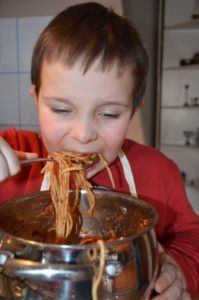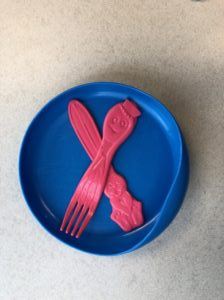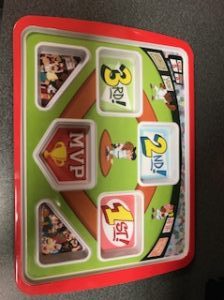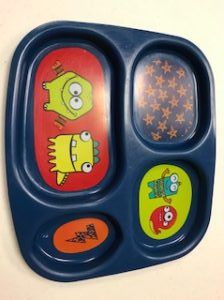Feeding
With Thanksgiving quickly approaching, do not let having a picky eater impact your time spent with family and friends. ABC Therapy would like to offer you these helpful feeding strategies to help reduce the stress during your Thanksgiving meals.
- Positioning– Children perform best when their feet are flat on a sturdy surface, eating surface is at waist level, and they’re able to reach all things in front of them.
- Variety– Offer an assortment of foods, both preferred and non-preferred options, but do not force your child to finish full amounts if they are unable.
- Volume- Offer small amounts of each food option so the child does not feel overwhelmed with the quantity on their plate. Children are more likely to try one bite of a new food than a whole helping.
- Choices- Offer numerous choices based on foods provided i.e “Would you prefer the corn or carrots on your plate?”
- Separate and Make it fun– Bring supplies like divided plates, a cupcake baking sheet, fun utensils, or different utensils for each food to help separate food item options.


- Messy Play– If your child is not willing to eat the foods, encourage describing the foods (color, texture, taste, etc.) and allow messy play so they can explore and interact with the options on their own terms. An example of messy play could be utilizing various cookie cutters to make playful shapes.
- Model– Demonstrate to your child what your expectations are with each food and how they should interact with it.
- Provide Praise but not Reward– Children feel accomplished when given praise like “I like how you took a bite out of ___”, “I see that you are trying hard to try ___”, “Good job touching ___”. However, providing a treat after eating a non-preferred food is not the best option for supporting carry over and independence in the skill.
- “All Done” bowl – Provide a safe place for the child to eliminate the foods from plate when they are finished to reduce overall anxiety.
- Back-up Plan– Pack the child’s f
 avorite foods in the case they are unwilling or unable to tolerate the foods provided.
avorite foods in the case they are unwilling or unable to tolerate the foods provided.
Hopefully these food-related strategies will help reduce stress for the whole family during the holiday season! Enjoy time with your family and don’t let picky eating impact the quality of time with loved ones. For more information pertaining to picky eating or other therapy-related resources, please visit https://www.abcpediatrictherapy.com/.
Happy Thanksgiving!
Read MoreDid you know by 3 your child’s diet should typically consist of a variety foods with various textures, sights, temperatures, colors and consistencies? If your child is not eating a variety of fruits, vegetables, meats, and mixed foods (such as mac and cheese or spaghetti), then your child may be a picky eater.
Before addressing feeding, make sure you child’s sensory needs are being meet. Sometimes addressing sensory concerns, such as deficits in proprioceptive input (knowing where your body is in space through heavy work or deep pressure), vestibular input (movements such as swinging), and or tactile input (how your body reacts to touch) can be enough input to help your child try new foods.
Having your child jump on the trampoline or in place, wheelbarrow walk or any animal walk to the dinner table, and or swing prior to eating could be good activities to complete before meal time. Your child could also benefit from the brushing protocol to help with sensory input (contact an occupational therapist at ABC Pediatric Therapy for more information on this protocol). Also, make sure child is okay with getting messy. If s/he is not, it will be beneficial to address this first as well.
Using shaving cream is one of the easiest messy play activities. At first, make sure your child tolerates being in the same area as the shaving room. Once s/he tolerates being near the shaving cream, have your child begin interacting with it. Put cars, planes, or boats in it and have the child push these around without touching the shaving cream. Slowly begin introducing shaving cream onto the cars and see if your child will continue to touch the cars. Once they do, see if your child will imitate you drawing roads for these cars in the shaving cream. After your child tolerates interacting appropriately with the shaving cream your child is ready to begin trying new foods.
Dr. Kay Toomey developed a feeding hierarchy that has been proven to have great success is regards to sensory picky eaters. Following along the same lines as shaving cream play, Dr. Toomey wants children to be able to tolerate and interact with new foods before actually eating them. If they are not able to tolerate being at the table with the food, then they are not going to be able to interact with it.
To assist with interacting with food, have your child prepare food and use utensils or the container to stir or pour foods/drinks. If your child is having difficulty with using utensils and self-feeding skills, please contact an occupational therapist for additional assistance.
Once your child interacts with foods, the next step on the hierarchy is to smell the foods; have your child lean down or pick it up to smell the food. The next big step is touching foods; go from touching it to his/her fingers to whole hand to chin/nose to lips to teeth to tip of tongue to full tongue to licking it. At this point, reward your child with a preferred food after 1-3 consecutive touches or licks of a non-preferred food. After your child is licking new foods, the next step is to begin tasting them. Initially have him/her take a small bite and designate a spit out jar. Once s/he is able to do this, see if your child can hold the food in his/her mouth for a certain amount of time or even chewing a certain amount of times before spitting out. The next goal would be to chew and swallow with a drink and then independently. Also, at this point, begin rewarding your child with a preferred food after so many bites of a non-preferred food. For example, have your child take 2 small bites of a green bean before being rewarded a preferred gold fish and then repeat this until you are satisfied with how many bites of a non preferred food your child is eating in one sitting.
If your child is not making the progress you want, your child may have oral motor deficits. For example, if your child is only eating softer, blander foods, they may have decreased strength. They may also have an immature chew which could make feeding difficult. An occupational therapist would also be able to assess this. A therapist will also be able to determine if your child is having sensitivities to the temperature, texture, flavor, sight, or smell of certain foods which could be inhibiting his/her success.
Please contact ABC Pediatric Therapy for more ideas geared towards your specific needs and if you have any additional questions. Visit our website at www.abcpediatrictherapy.com to find the location nearest you.
Read More Skip to content
Skip to content



 avorite foods in the case they are unwilling or unable to tolerate the foods provided.
avorite foods in the case they are unwilling or unable to tolerate the foods provided.